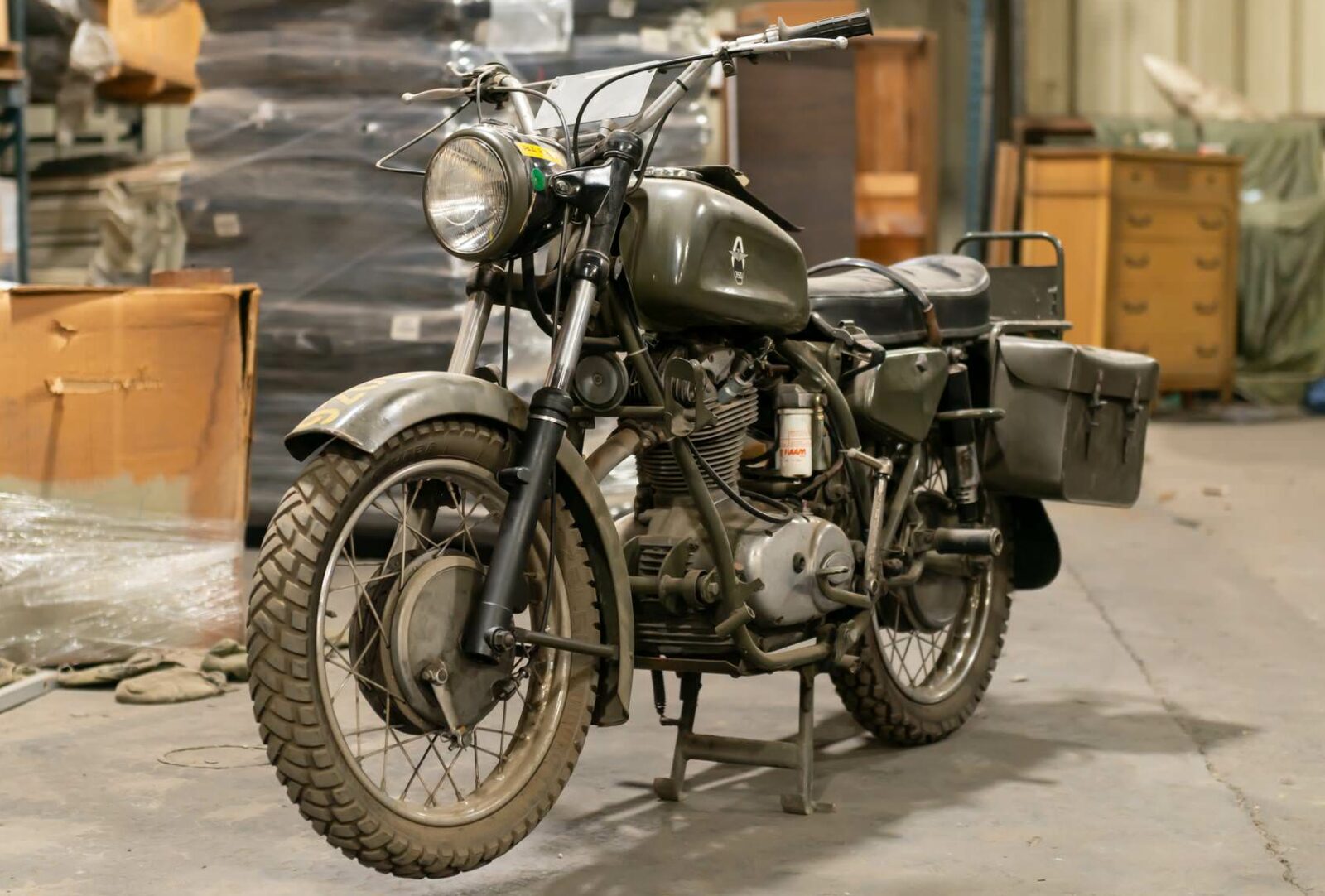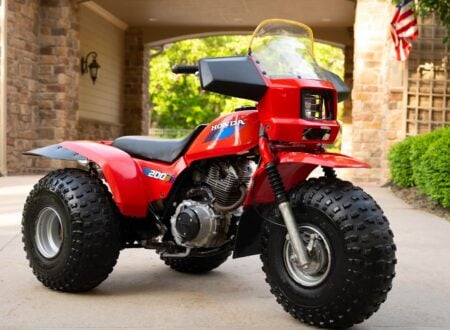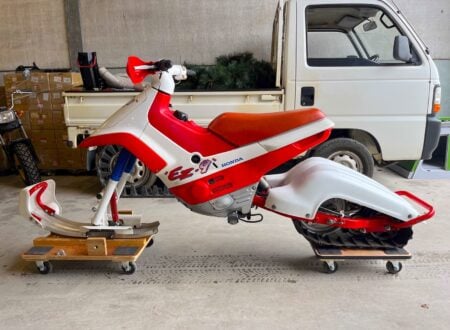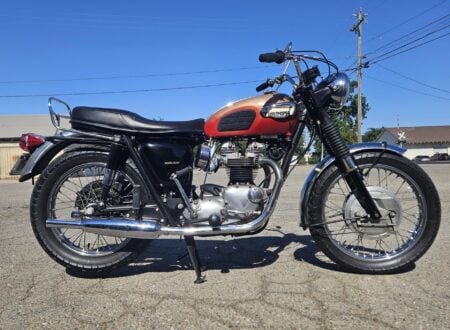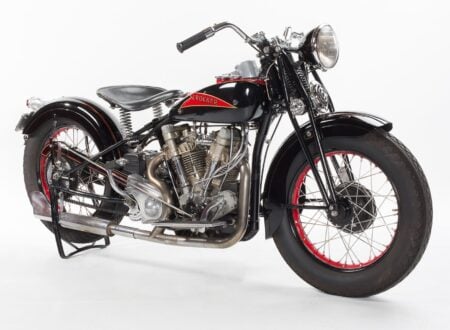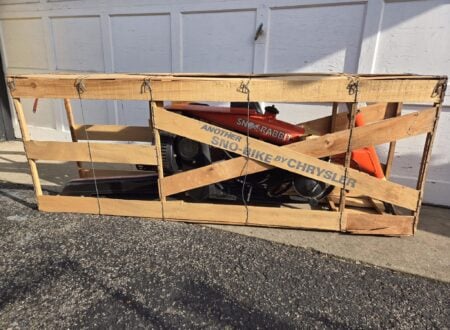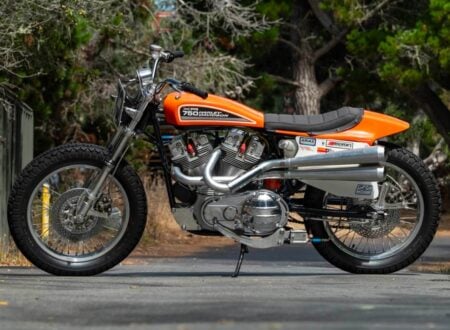The Condor A350 was developed in the early 1970s as a motorcycle for the Swiss Army, the 350cc engine from the Ducati 350 Scrambler was used and they built the rest of the motorcycle around it locally. It was designed to be tough, simple, and mountain goat-like in its ability to traverse steep mountain passes.
It’s believed that just 3,000 examples of the Condor A350 were ever made, with the last examples retired by the Swiss Army in the 1990s. They’re now considered highly collectible in vintage motorcycle circles.
Fast Facts – The Condor A350
- The Condor A350 was produced in Switzerland in the 1970s as a motorcycle exclusively for the Swiss military. The design earned a reputation for its toughness and its ability to go anywhere, and it remained in military service well into the 1990s.
- For strategic purposes, Condor-Werke AG was tasked with building as much of the motorcycle locally as they could. They did outsource some major components, specifically the engine, suspension, and brakes.
- The engine was sourced from Italy, it’s a modified single-cylinder unit that was also used in the Ducati Scrambler 350. The forks and rear suspension also came from Italy, from Marzocchi, although the shock absorbers were changed to Konis later in the production run.
- After the Condor A350 left military service they were sold off as military surplus, many have been bought locally in Switzerland and around Europe, and they typically remain affordable collectible motorcycles today.
The Swiss Motorcycles of Condor-Werke AG
Condor-Werke AG was founded back in 1893 to produce watchmaking tools in the small Swiss town of Courfaivre near Delsberg. By 1904 they had added bicycle manufacturing to their portfolio, capitalizing on the wildly popular safety bicycle design that had taken the world by storm.
Above Video: This short film shows the Condor A350 being ridden and the host discussed the motorcycle’s history in detail.
They supplied their bicycles primarily to the post office and the military, beginning a military-alliance that would last until the end of the century. Around the same time Condor produced its first motorcycle, powered by a simple 1.25 bhp motor mounted in a bicycle frame.
Over the years their motorcycle division would grow rapidly, given the famously mountainous Swiss landscape it’s obviously more appealing to be riding a motorcycle up steep hillsides than a bicycle. Condor did produce a few motorcycle engines in-house however the vast majority were sourced from other manufacturers in Europe – it simply made the most financial sense.
Condor made much needed motorcycles and bicycles throughout the First World War, and by the 1920s the company was producing a range of motorcycles with displacements from 250cc all the way up to 1000cc.
After WWII Condor became best-known for supplying military motorcycles to the Swiss Armed Forces including the Condor A350 in the 1970s.
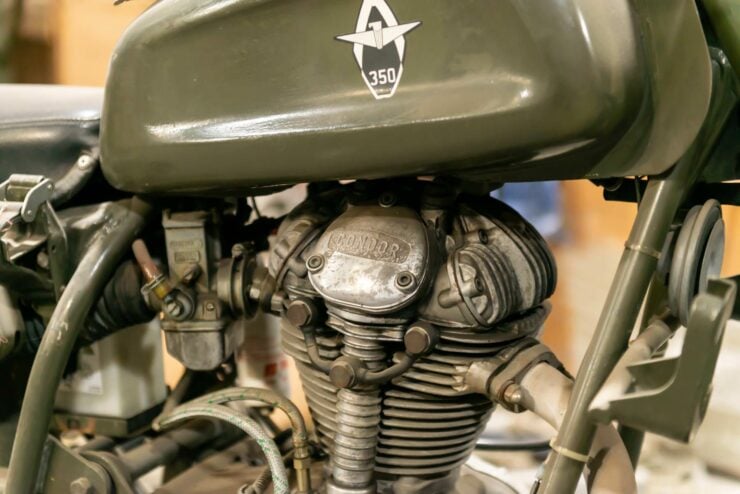

They would continue making bicycles locally until the mid-1990s, and by the early 2000s they were making aircraft parts. It now appears that the company has ceased all operations, as their website no longer loads and little information about the company is available – if you know more please message us via the contact us page.
The Condor A350
The Condor A350 was built exclusively as a military motorcycle starting in the early 1970s and running until 1978 with approximately 3,000 built in total – all delivered to the Swiss Army. Military motorcycles by their very nature tend to be very different to civilian consumer models, they need to be tough, reliable, and easy to service with power output being very much a secondary concern.
It was decided early on that the A350 would need a unit construction engine/transmission from a pre-existing production motorcycle – rather than Condor developing one themselves in house and incurring a significant expense.
The well-proven Ducati 350cc single-cylinder engine from the Ducati Scrambler 350 was chosen, and each engine was built by Ducati specifically for Condor with a lower compression ratio of 8.2:1 so that it could tolerate lower octane fuels.
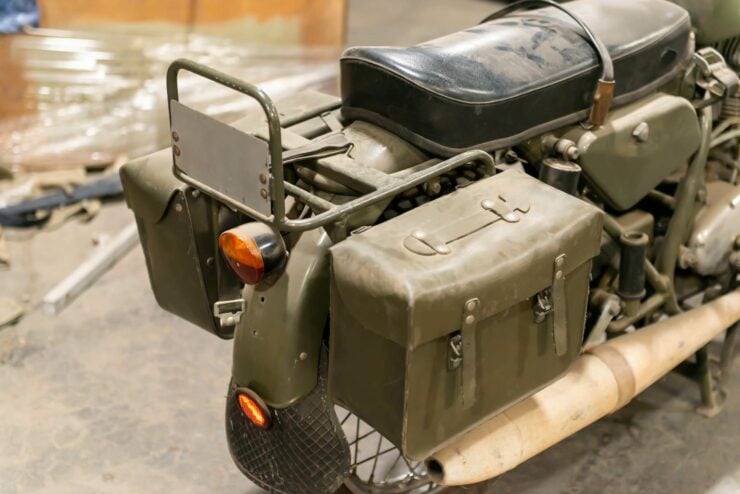

In the Ducati Scrambler the engine is a load bearing member that’s bolted directly to the frame however in the Condor the engine is rubber mounted to the frame using a design possibly inspired by the Norton Commando Isolastic system that first appeared in the late 1960s.
Condor developed an entirely new frame for the A350, a strong tubular steel duplex cradle that didn’t need to rely on the engine for any additional rigidity. To this frame a pair of Marzocchi forks were fitted up front, with a spoked wheel and a drum brake attached.
In the rear the first production bike also had Marzocchi dual shock absorbers, however they were later changed to Koni units. The 5-speed gearbox sends power back through a chain final drive to the rear wheel, and the rear sprocket was geared down to provide better hill climbing ability at the expense of top speed – the latter of which wasn’t seen as a priority for military use.
The Ducati Scrambler 350 didn’t have a traditional oil filter, instead it made do with a simple screen-like device to remove larger particulates. Condor decided they could improve on this, and improve the longevity of the engine at the same time, by installing a remote oil filter on the left hand side of the bike just next to the carburetor.
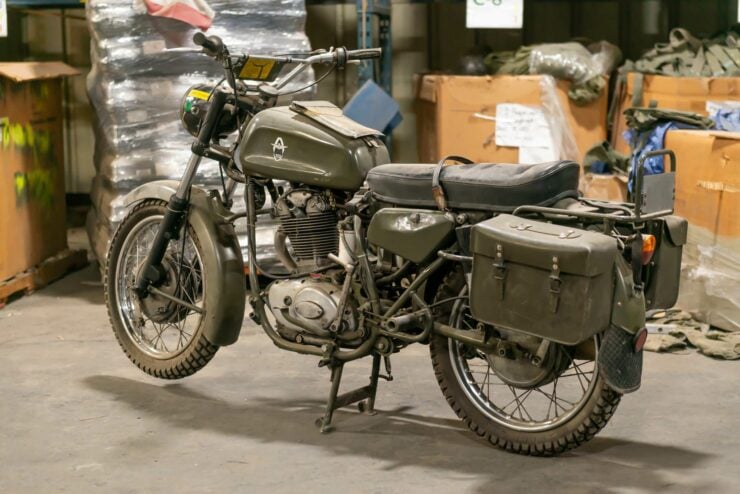

Interestingly the exhaust was made in-house by Condor specifically to be as quiet as possible, silence being golden for military personnel in many situations, and it’s finished in a non-reflective aluminum based white paint.
For the sake of simplicity both wheel rims are the same however they take slightly different tires at 3.25×18”front and 3.50×18” rear. Many of the electrical components were sourced from Bosch including the headlight, and the bike uses a 6 volt electrical system.
Interestingly the rear tire can be changed or patched quickly thanks to the fact that the rear sprocket remains attached to the swingarm, meaning the chain can stay on, simplifying things significantly.
In its detuned state the Ducati 350cc single cylinder engine produces just 25 bhp at 7,500 rpm, however it does offer excellent longevity and enough power to get the bike up to 70 mph when needed.
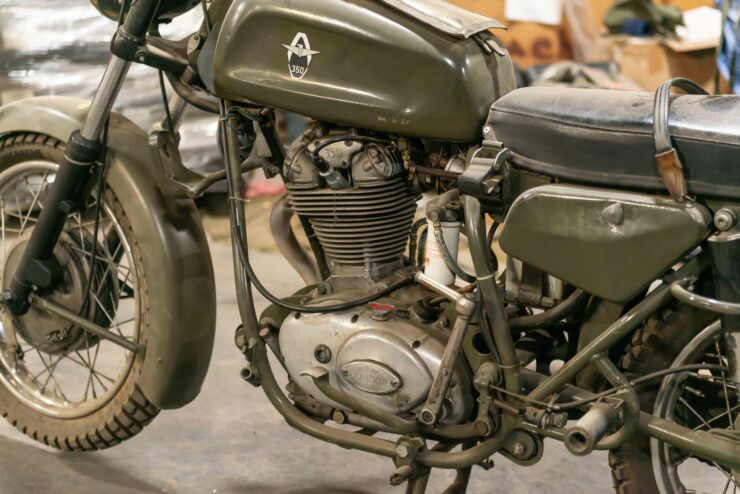

All 3,000 examples of the Condor A350 were retired from the Swiss Army by the mid-1990s and eventually sold off into private hands. Some found use on farms where they were well suited to the conditions, and many others have been bought by enthusiasts, with some examples ended up as far away as the United States.
The 1970 Condor A350 Shown Here
The 1970 Condor A350 that you see here appears to be in remarkably original condition throughout, right down to the military markings and side panniers. As you would expect it’s fitted with chunky tires for occasional off-road use and it has that distinctive exhaust with the white aluminum painted finish
It’s currently showing just 30,609 on the odometer and the price guide is $1,500 – $2,000 USD, making it nice and affordable as an interesting historic motorcycle that you could still ride everyday if you wanted to.
If you’d like to read more or place a bid you can visit the listing here, it’s due to roll across the auction block with The Market by Bonhams and it’s being sold out of Bakersfield, California.
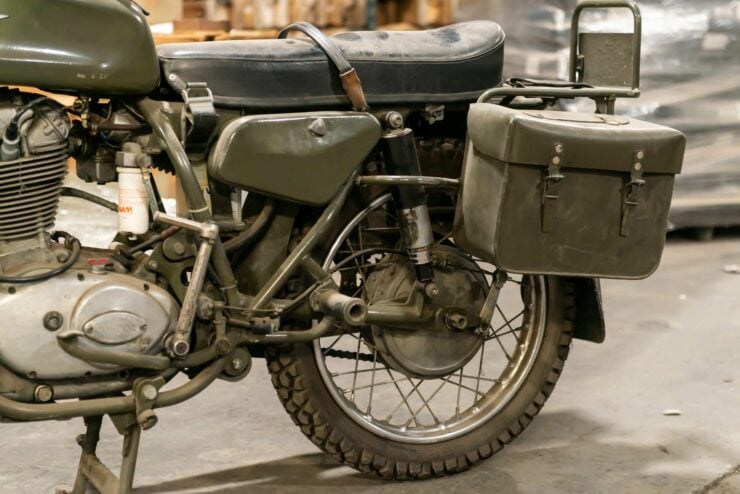
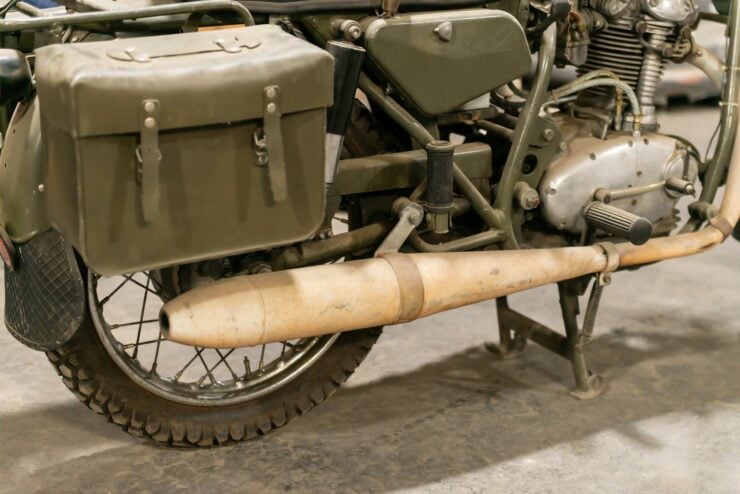
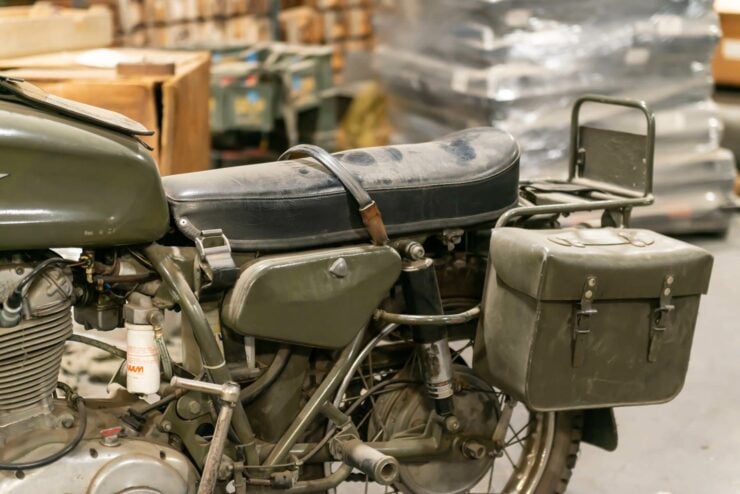
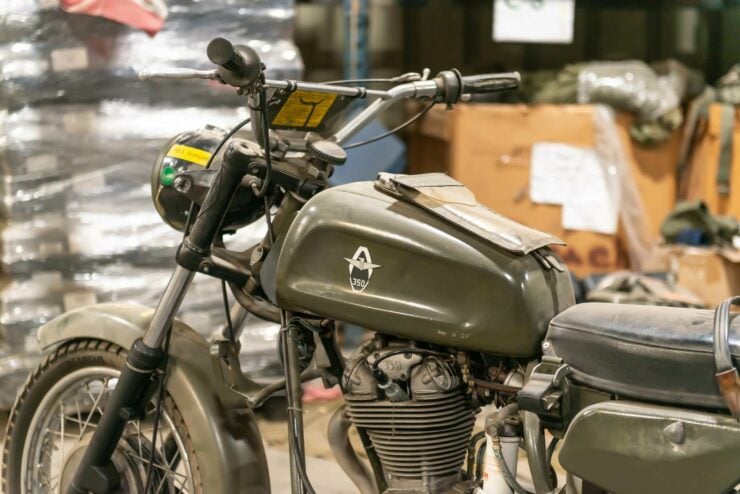
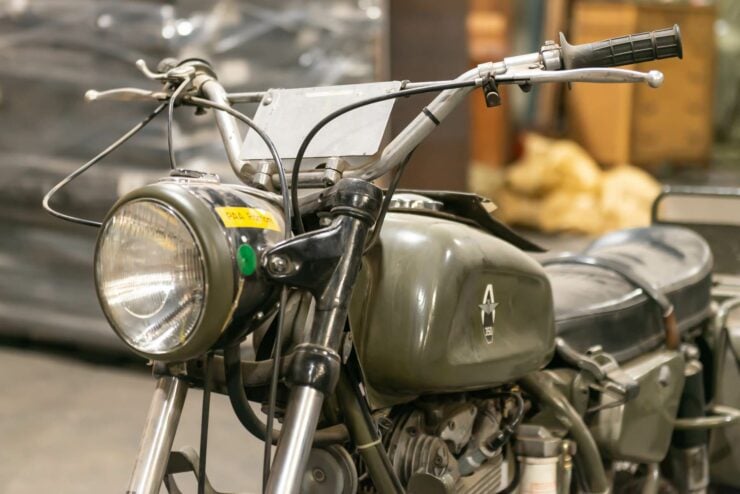
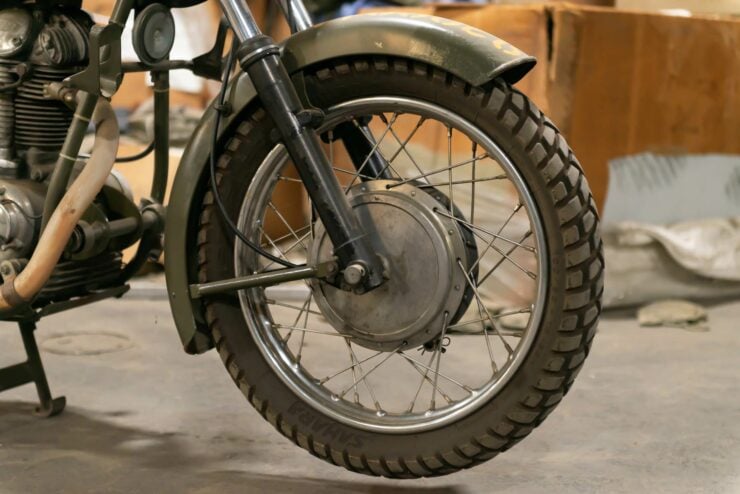
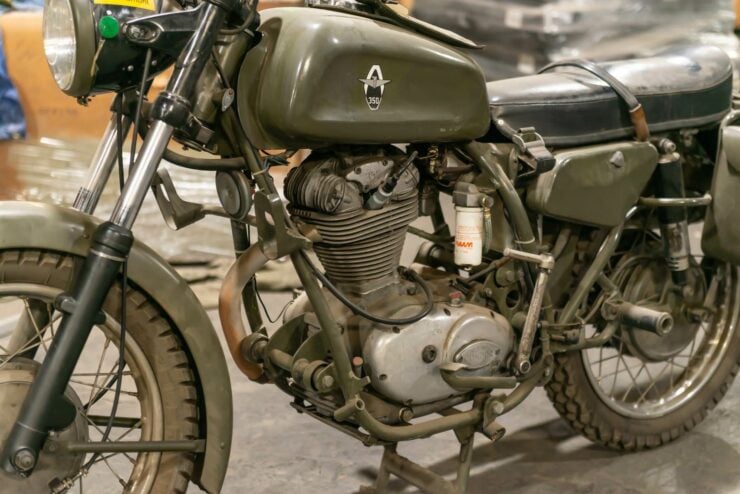
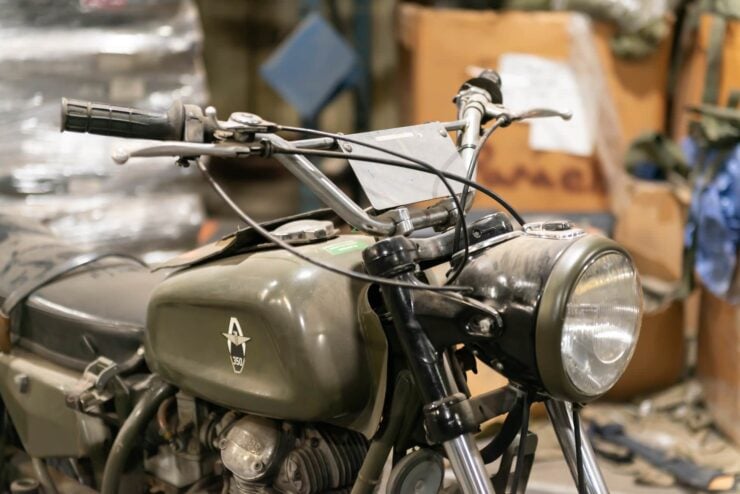
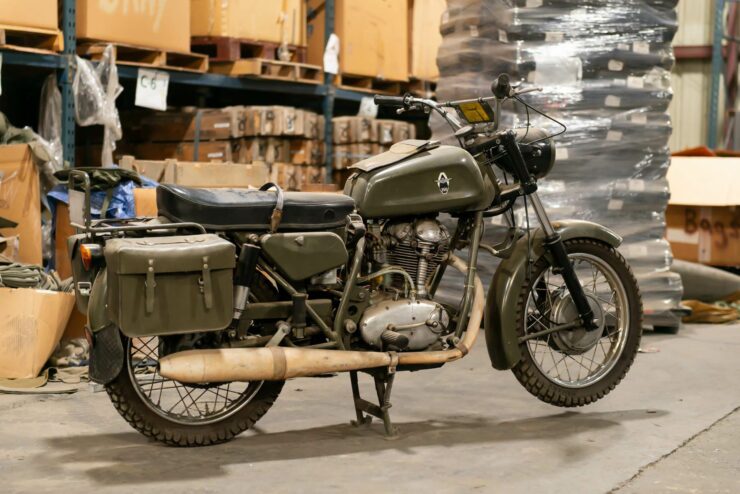
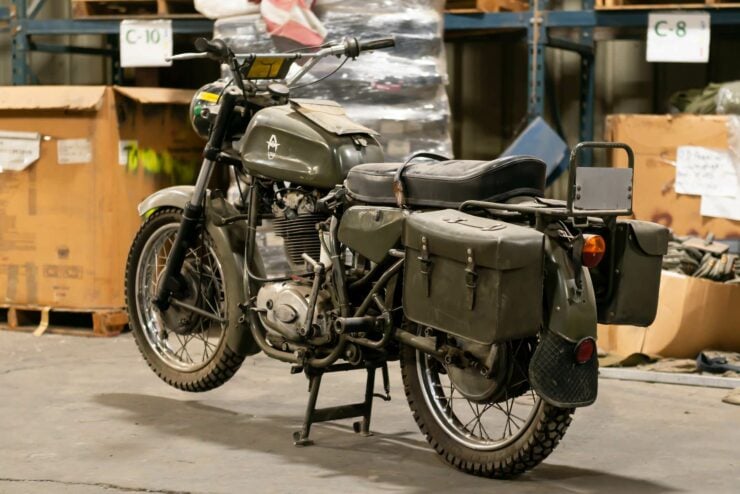
Images courtesy of The Market by Bonhams

